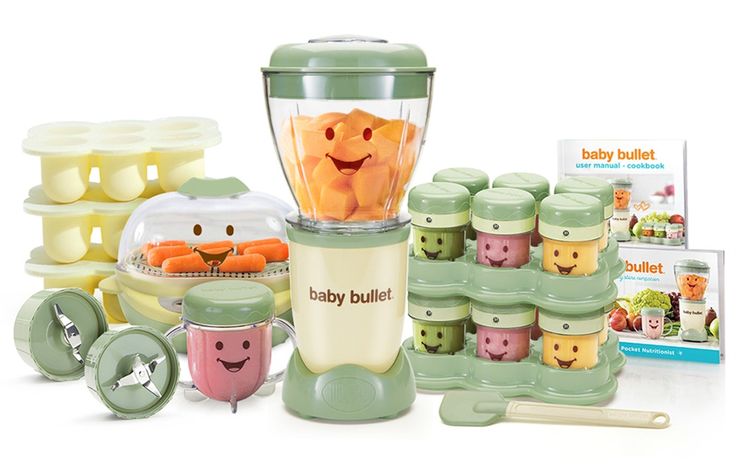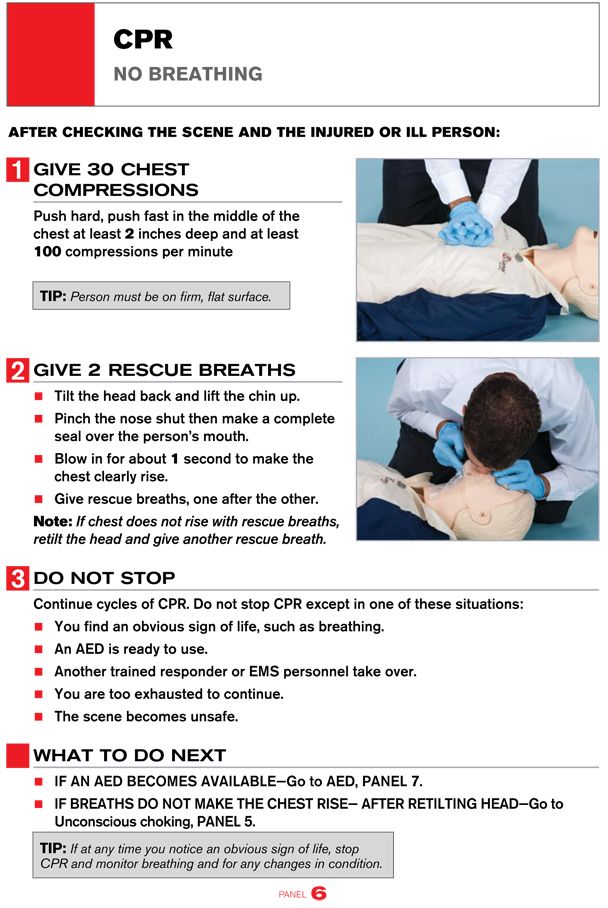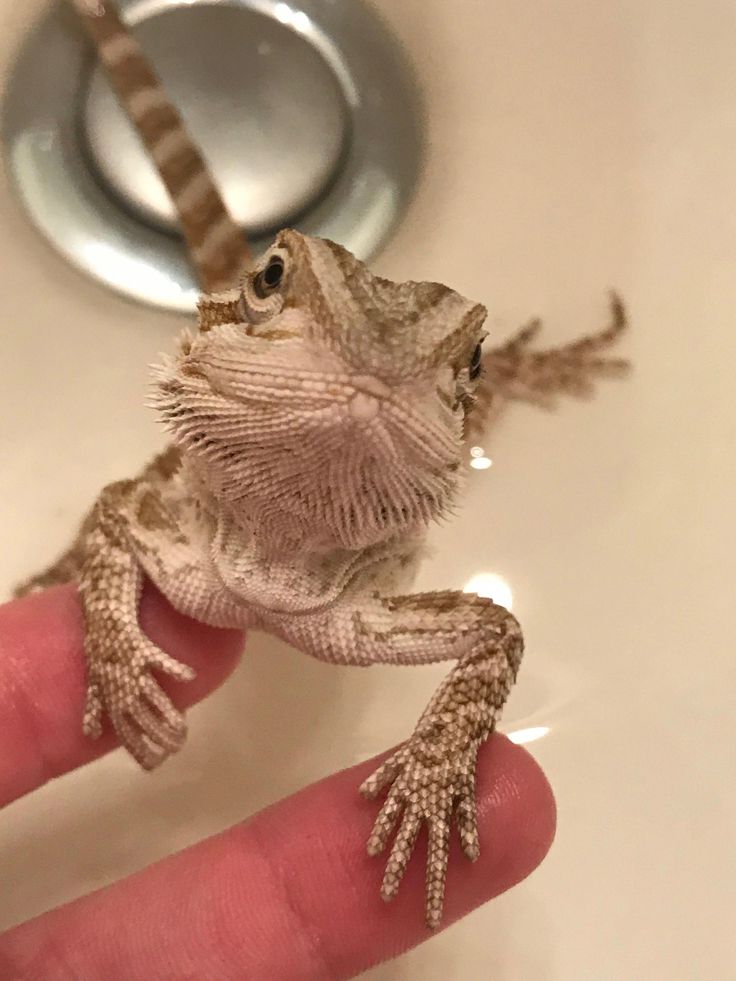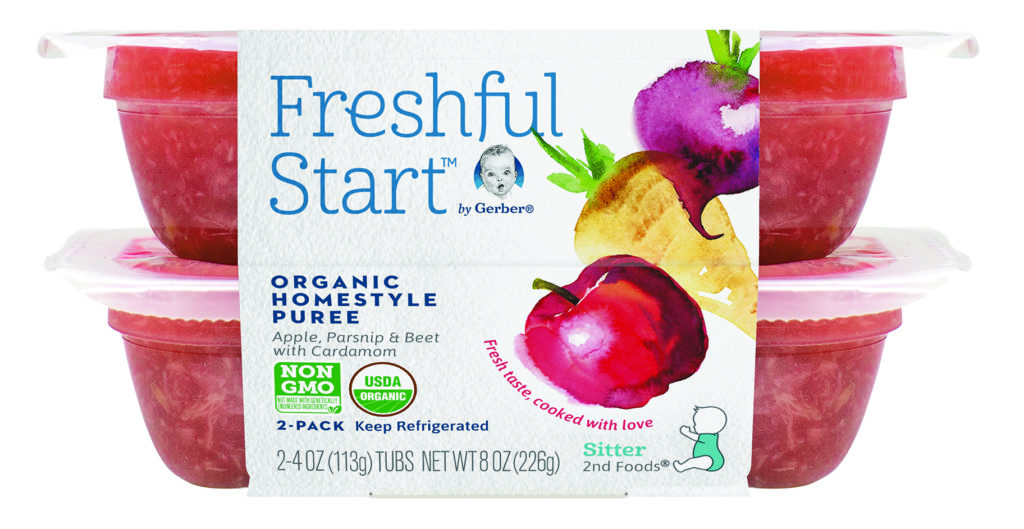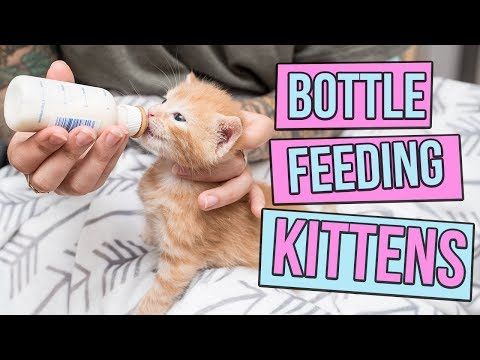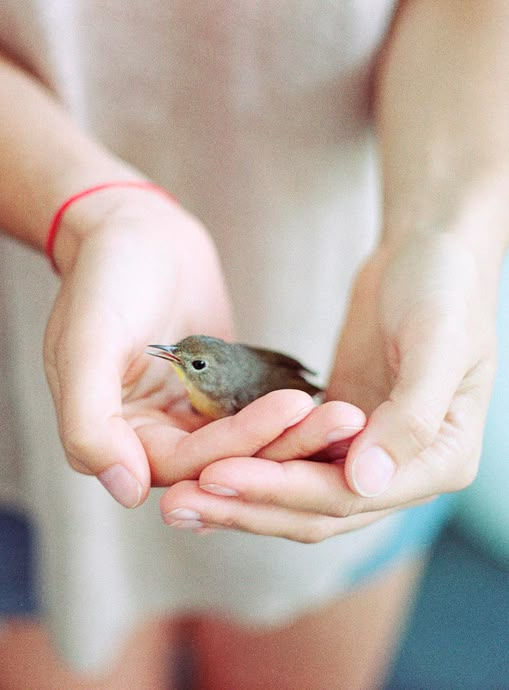How to hand feed a baby rabbit
Hand-Raising Baby Rabbits - Feeding, Vaccinations & More
Hand-raising baby rabbits can be tricky and demanding, requiring a lot of time and dedication. This responsibility should never be taken lightly, and some points should be considered before deciding to hand-raise a baby bunny.
First and foremost, it is important to be 100% sure that the mother rabbit isn’t feeding the babies. Unless the mother rabbit is known to be deceased, there is a good chance that she is feeding her babies, even if it appears that she might be ignoring them.
A mother rabbit does not constantly tend to her babies the way we might think. Instead, they generally feed their babies only once or twice per day and then leave them alone, which is normal and natural behaviour. In the wild, a mother rabbit generally stays as far away from the nest as possible to avoid attracting predators to her babies. She will only revisit the nest to feed her young.
Signs of Neglect
If you think the mother rabbit is “ignoring” her litter, have a look at the babies. If the babies’ tummies are round and full looking, they are warm, their skin is not wrinkled, and they are sleeping calmly in the nest, then the mother rabbit is likely feeding them. If the babies are wrinkled, cold or have shrunken bellies, then this is a sign you may have to intervene.
Handling Newborn Rabbits
Before handling the babies, you must wash your hands well. This removes bacteria and eliminates any smells from other objects or animals that can stress the babies. Once your hands are clean, rub your hands in a bit of clean, fresh hay and on the mother rabbit’s fur to scent your hands.
Feeding Newborn Rabbits
Before starting any syringe or bottle-feeding, it is worth trying to get the babies to feed off their mum. There are a couple of ways to do this.
-
- Hold the mother over the babies in the nest to give the babies enough time to feed.
- Another option is to hold the mother rabbit on her back in your arms and gently try to put each baby onto a nipple to self-feed.
 Sometimes it is helpful for the babies if a small amount of milk is expressed from the nipple to entice the baby to suckle.
Sometimes it is helpful for the babies if a small amount of milk is expressed from the nipple to entice the baby to suckle.
If these two methods prove unsuccessful is not successful, then you may need to start hand-raising.
Providing Warmth
It is best to keep the babies in a warm, quiet place in a nest. Bunny fur is the best lining for the nest, but clean cotton wadding will do as a substitute. Just be sure the babies do not get tangled in it. For heating, two or more babies usually can snuggle and keep each other warm if they have a good nest. If there’s only one baby, a warm water bottle or heat pack wrapped in a soft towel can provide an excellent heat source however be sure the baby can crawl away if it feels too warm.
Formula and Feeding Supplies
We recommend using the Wombaroo Rabbit Milk as it is well balanced and contains a ‘milk oil’ equivalent which is important for baby rabbits. It comes as a powder that can be mixed with warm water to make milk for the babies. All the mixing instructions are on the box. Wombaroo Rabbit Milk can be purchased from The Unusual Pet Vets, some veterinary clinics and pet stores.
All the mixing instructions are on the box. Wombaroo Rabbit Milk can be purchased from The Unusual Pet Vets, some veterinary clinics and pet stores.
You will also need some small plastic syringes for feeding the milk to the babies. These are available from the Unusual Pet Vets, as well as some pharmacies.
You can also purchase small plastic feeding bottles and plastic teats from some large pet shops; however, you will need to buy the smallest teat possible as usually the puppy and kitten ones are too big. Most baby rabbits will feed from a syringe without a problem.
A small set of scales to weigh the baby rabbits will also be required. The amount of milk to feed is dependent on the baby rabbit’s weight. There is a weight chart on the Wombaroo Rabbit Milk box and the mls of milk to be fed over 24 hours. How much the baby rabbit will take in one feeding session depends on how frequently you have the feed them.
Feeding Procedure
When feeding, it is important to prevent aspiration (inhalation) of the formula by the babies. The smallest drop of formula in the lungs can cause fatal pneumonia within a few hours. The following instructions provide a step-by-step feeding guide:
The smallest drop of formula in the lungs can cause fatal pneumonia within a few hours. The following instructions provide a step-by-step feeding guide:
Step 1
Make sure all your syringes and bottles have been washed before use.
Step 2
Baby rabbits can be wiggly and unpredictable, so ensure they are fed in a safe place where they cannot fall.
Step 3
Hold the baby upright (or in some cases on their back gently) in one hand and the bottle/syringe in the other.
Step 4
Babies often resist feeding at first, and you must overcome the temptation to force-feed. If the baby doesn’t accept the teat or syringe, then wet the baby’s lips with a drop of warm formula so they will hopefully lick it off. Once they have swallowed that, repeat the procedure over and over. Be persistent and gentle. In most cases, the baby will soon learn about feeding time and take the formula willingly though they may not do this on the first feeding.
Step 5
Do not be too forceful and squeeze too much formula into the baby rabbit’s mouth. They can aspirate milk quite easily, so only drip the formula slowly for the baby to lick up.
They can aspirate milk quite easily, so only drip the formula slowly for the baby to lick up.
Step 6
If the baby grabs the teat and begins suckling, allow them to do so without adding any pressure yourself. The baby should be able to suckle with enough strength to empty the bottle or syringe without any help from you. If you provide extra force, the baby may accidentally aspirate formula that’s coming in too fast.
Step 7
If the baby does not suckle, it’s generally not a major problem. Most will learn to lap/sip from the tip of the teat, and this is safer in many cases as it does reduce the risk of aspiration. Try to hold the teat/syringe tip sideways or down-pointed (so the plunger is lower than the tip) relative to the mouth to further reduce the risk of aspiration.
Step 8
Until they open their eyes, handle the babies as little as possible when you’re not feeding.
Urination and Defecation
Many newborn mammals cannot urinate/defecate on their own. Many baby bunnies will require the stimulation of the mother’s grooming tongue on their bellies and genital region in order to release a stream of urine and faeces. If you are hand-raising, then you will need to try to mimic this behaviour. To do this, use a cotton ball moistened with warm water, and gently tap/rub the urogenital area until you feel the baby’s abdominal muscles tense and release a stream of urine or pass faeces. Getting this response may take 15-20 seconds of stimulation, or even more in some cases.
Many baby bunnies will require the stimulation of the mother’s grooming tongue on their bellies and genital region in order to release a stream of urine and faeces. If you are hand-raising, then you will need to try to mimic this behaviour. To do this, use a cotton ball moistened with warm water, and gently tap/rub the urogenital area until you feel the baby’s abdominal muscles tense and release a stream of urine or pass faeces. Getting this response may take 15-20 seconds of stimulation, or even more in some cases.
Baby rabbits’ eyes open at about 10 days of age. Once this occurs, you can gradually introduce them to timothy and oaten hay, pellets, small amounts of green vegetables, and water in a shallow dish.
By 2 – 4 weeks of age, normally, baby rabbits will start eating their mother’s caecotrophs to keep their gastrointestinal tract full of good bacteria. If you have access to the mother rabbit or another healthy rabbit’s caecotrophs – mix them with some formula or some warm water and syringe feed this to the babies.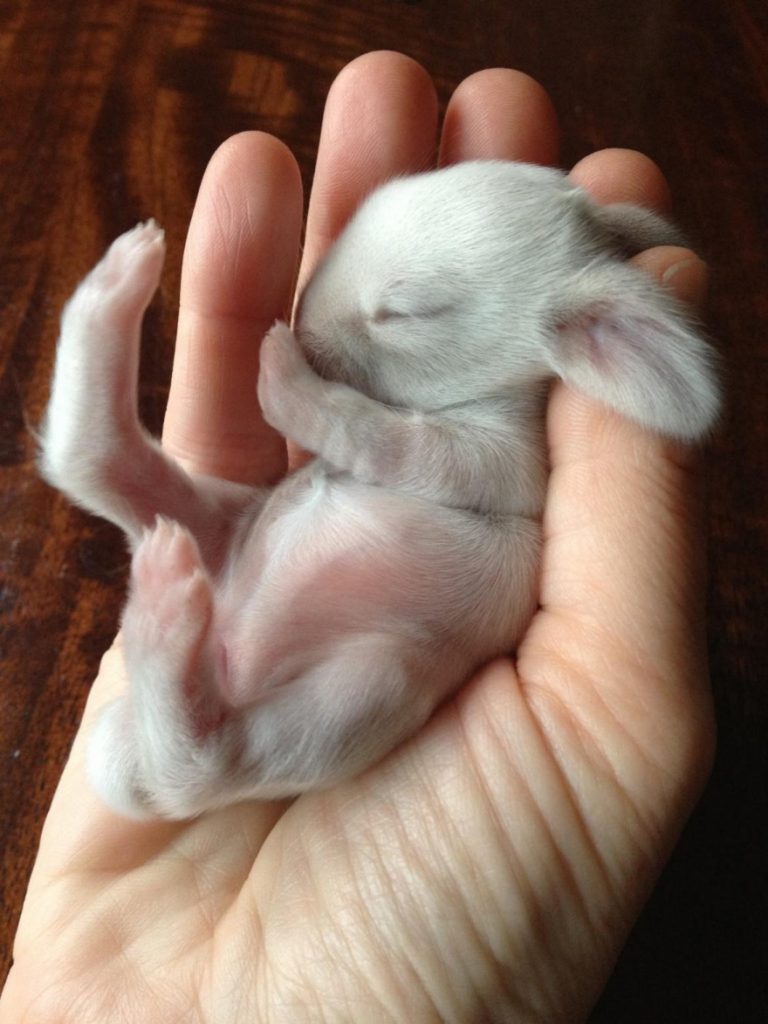 It is good to repeat this 2 or 3 times over a 2 – 3 week period to help them establish normal gastrointestinal flora.
It is good to repeat this 2 or 3 times over a 2 – 3 week period to help them establish normal gastrointestinal flora.
Weaning
A mother rabbit feeds her babies for about 3 – 6 weeks, gradually decreasing the frequency of feedings until they lose interest. Your baby bunnies will start to nibble solid food at about the age of two to three weeks, but this does not mean they are ready to be weaned.
If the babies still beg for nursing by the age of 6-8 weeks, you can begin to dilute the formula with clean drinking water to help the weaning process. Start with 25% water to 75% formula, and gradually decrease the percentage of milk until the babies lose interest.
Baby rabbits can then be rehomed to new families by 8 weeks of age, as long as they are fully weaned and eating solids well on their own.
Vaccinations
Baby rabbits should then be vaccinated against Calici Virus when they are eight weeks old, then a booster is required four weeks later, and then bi-annually from then on.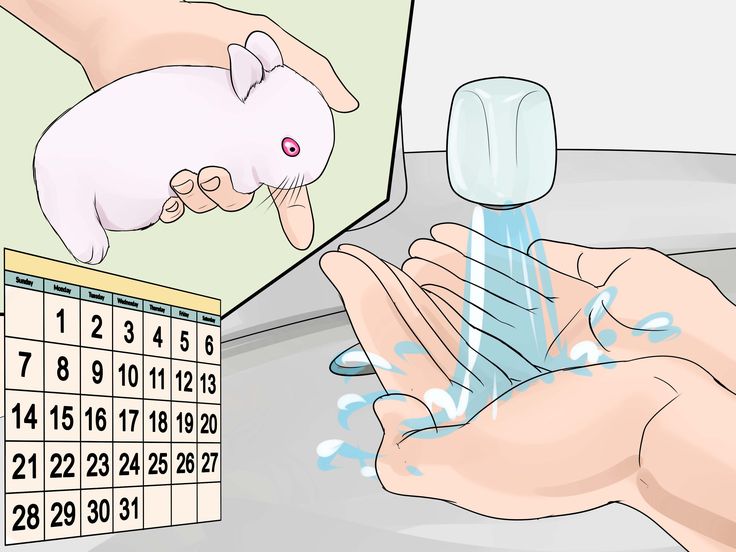
Sterilisation
Rabbits can generally be sterilised from 4 months of age for males and 5 months for females. Male and female baby rabbits should be separated from each other by 10 – 12 weeks of age to prevent any early pregnancies.
If you have any further questions, please don’t hesitate to get in touch with us or book an appointment with a rabbit vet.
How do I hand-feed a baby rabbit?
Hand-feeding a baby rabbit is not for the faint of heart. In fact, the job is very time consuming and is harder to do that what it may seem to be. Not only do you need to know what to feed them, you must also know what the correct amount is for each stage of growth. While under feeding will cause them to starve to death, over feeding them can cause pain and gas, making the baby sick. As you continue to read this article, we will provide the answers that you need to successfully hand rear bunnies.
Bottle options
Choosing the correct bottle is as important as having the correct formula to put into the bottle.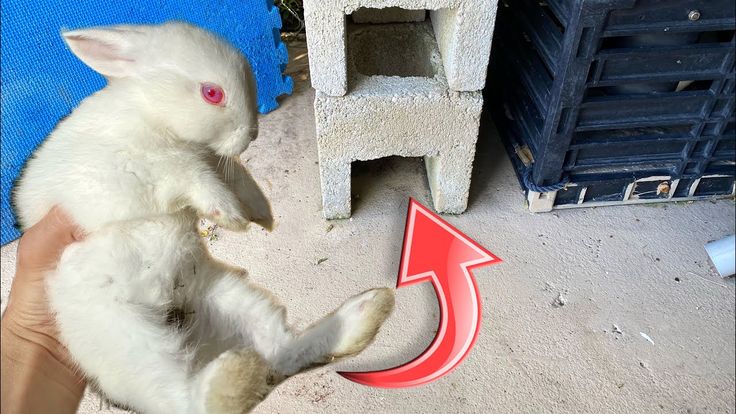 For novices, the choices can be confusing. The typical pet-nursing bottles that are sold for kittens and other small animals, but that is not the end-all be-all options you have to work with. There are various types of Syringe feeders, Q-Tips, and sponges. There really is no right or wrong option; however there are right and wrong ways to use each of them.
For novices, the choices can be confusing. The typical pet-nursing bottles that are sold for kittens and other small animals, but that is not the end-all be-all options you have to work with. There are various types of Syringe feeders, Q-Tips, and sponges. There really is no right or wrong option; however there are right and wrong ways to use each of them.
1. PET NURSING BOTTLES: These can be bought at very low prices, in most stores which offer pet supplies. The important thing to note is the nipple size and the fact that you have to make the hole in the tip of the nipple. If you make the hole too large, the babies can get too much formula and possibly aspirate. On the other hand, if you make the hole too small, the babies may not be able to get enough formula and will, essentially, starve to death. Therefore, the best method is to use a pair of (tiny, very sharp) fingernail scissors. Push the tip of the scissors up thru the “inside” of the nipple, and continue pushing until half of the blades are pushed thru and out of the tip.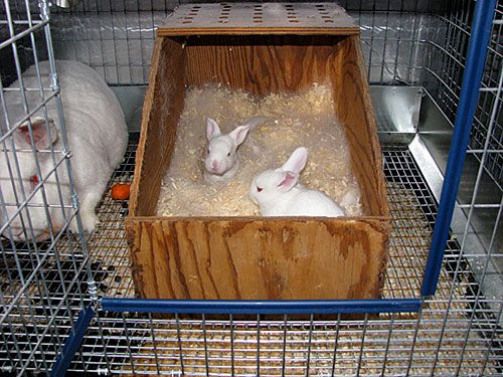
When you pull the scissors out, pinch the tip of the nipple to expose the cut area, and then working from the outside, using the center of the cut as your center-point, snip an “X” into the nipple. This may need to be repeated to get the hole to produce an effective amount of formula. You will ‘have it right’ when you test the cut. To do this, put water in the bottle, replace the top and nipple, and hold it at a 60-80* downward angle. Pinch the end of the nipple with mild to moderate pressure. If a droplet easily comes out, you are in good shape. If water comes out without the need of pinching the nipple, your hole may be too large. And if there is no droplet or if it requires you to pinch hard and only results in a small drop, then your hole is too small.
You might also like: How to care for a rabbit? 10 Steps!
2. Q-TIPS: These are readily available at most any store, and cheap. This option may be best and easiest to use for newborn babies.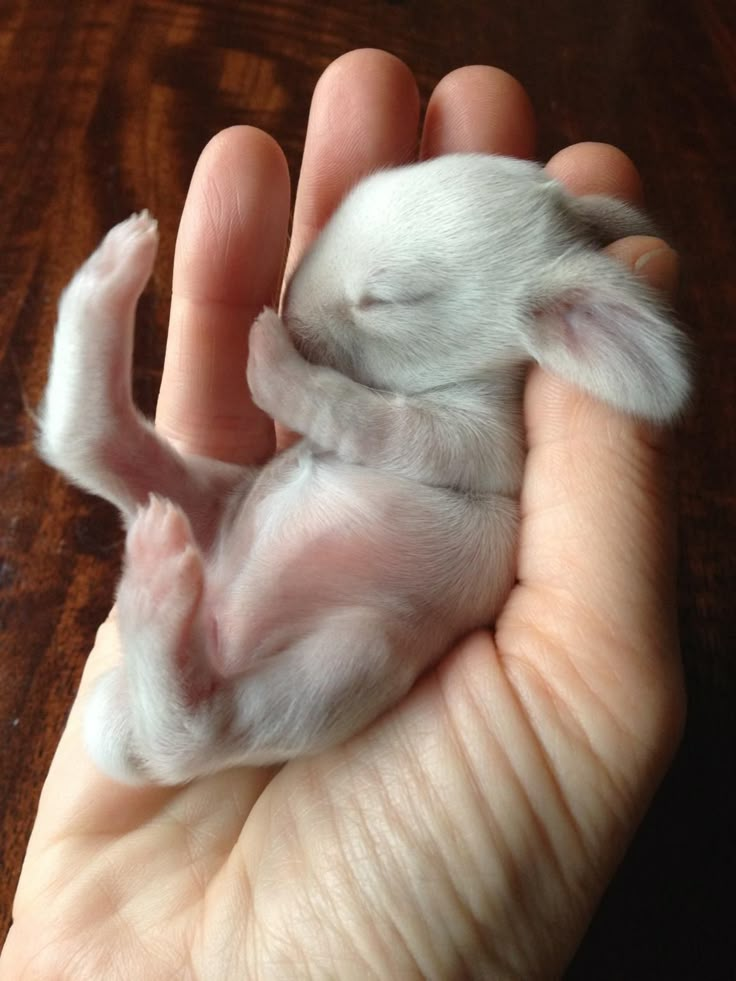 You will want to use the type with rounded tips, not the pointed type that are made for make-up applications. There are two ways to use a Q-tip to feed with. The first method is to dip the cotton-end of the q-tip into the formula and allow the baby to suck the formula off of it, then re-dip and repeat. It may take a few tries to get the baby to understand that it is being fed this way, so don’t be too forceful, but keep trying until he gets the hang of it. The next method is to cut a q-tip in half and insert the stick end into the end of a syringe.
You will want to use the type with rounded tips, not the pointed type that are made for make-up applications. There are two ways to use a Q-tip to feed with. The first method is to dip the cotton-end of the q-tip into the formula and allow the baby to suck the formula off of it, then re-dip and repeat. It may take a few tries to get the baby to understand that it is being fed this way, so don’t be too forceful, but keep trying until he gets the hang of it. The next method is to cut a q-tip in half and insert the stick end into the end of a syringe.
Note that the syringe will need to snuggly hold the stick, or formula will just pour out when you try to use it to feed with. Otherwise, when using this method, you will need to be sure the q-tip has the plastic, hollow type sticks. This allows you the option of putting the formula into the syringe and allowing it to flow down and soak the cotton, therefore eliminating the need to continually dip the q-tip into the formula so many times.
3. SPONGES: Buy a pack of make-up wedge sponges. Dip the thin end into the formula, and use the corner edge for the baby to suckle from. This is a better option than the q-tip dipping method in regards that you don’t have to continually dip the sponge. Instead, once the baby has drained the formula from it, you can put more formula on the center of sponge with a dropper, which will then be absorbed down into the tip the baby is nursing from.
4. SYRINGES: Syringe feeding can save a lot of time, however the type of syringe you use will play an important role in how the formula will be accepted.
(A) Rubber Ear Bulb Syringes work very well for this, as the tip of the syringe and the stick of the q-tip are relatively a good fit, although you will still need to “push” the stick into the syringe so that it is snug and will not be easily removed from the baby while suckling from it. One notable caution is to pay attention to the cotton. If the baby chews it and frays the fibers apart, you will want to switch q-tips to a new one; to prevent the baby from swallowing the stringy fibers which might cause choking or GI problems such as Wool Block.
If the baby chews it and frays the fibers apart, you will want to switch q-tips to a new one; to prevent the baby from swallowing the stringy fibers which might cause choking or GI problems such as Wool Block.
(B) Sponge-Syringes can be used in similar method as described above. If opting for this method, you would push the end of the syringe into the wider/thicker end of the sponge about half-way down into the sponge. The notable caution with this method is also as described above; being careful to watch that the baby doesn’t chew any bits of the sponge off, which could result in choking or GI problems.
(C) Slip-On Nipple Syringes would be your other choice. These can be used with several types of feeding tips, from silicone tube to nipple. One of the more popular types is called a “Miracle Nipple”, which slips over the end of a slip-tip and luer-lock syringe as well as small pet bottles, and offers a pre-made hole in the tip (available on Amazon).
Baby Formula
Now that we have covered the container options, let’s look at what you will need to put into the bottle. There are several milk replacers, including kitten formula that can be used safely when feeding orphaned bunnies. However, the best option is Goats Milk, which can often be found in the dairy section of your local grocery or Health Food type stores. Next, you will need Heavy Whipping Cream; also available in the dairy section of your local grocery store. And then you will need Colostrum. The most commonly used form is the powdered “Kid Colostrum” for Goats, which can be found at most feed-supply stores. Once you get these items home, you will need to gather up a few tools: A container with a lid that closes (such as a Water Bottle) for mixing and storing, a small bowl and coffee cup, ½ cup measuring cup, and measuring spoons at 1 Tablespoon and ½ Teaspoon. Now, you will want to put the formula mixture into the mixing/storing container. Here is the recipe: ½ Cup Goat Milk, ½ Teaspoon of Heavy Cream, and 1 Tablespoon (or 10 emptied capsules, if using that form) of Colostrum. Now in your coffee cup, fill half full of water and microwave for 1-3 minutes, or until the water is at a low boil. While waiting on the water to heat, close the container with the formula and shake vigorously for several minutes. Once the water is hot, pour a small amount of the formula into a the small bowl.
Now in your coffee cup, fill half full of water and microwave for 1-3 minutes, or until the water is at a low boil. While waiting on the water to heat, close the container with the formula and shake vigorously for several minutes. Once the water is hot, pour a small amount of the formula into a the small bowl.
(Tip: A washed out single-snack size yogurt cup works great!)
Then place the small bowl of formula into the hot water. This will heat the formula without scorching it, while allowing you to have a more consistent watch on the temperature of the formula. As you would with an infant child, you want the formula to be room temperature or luke-warm. The babies will not drink cold milk, and if it’s too hot it could cause them to be burned.
Feeding the babies
When feeding baby rabbits, there are several things that should be noted. First of all, the babies only need to be fed twice daily – morning and night. And after every feeding, for at least the first 2-3 weeks, each baby will have to be stimulated to potty. It is easily done! Just gently rub or pat the genital/anal area with a warm, soft cloth; however, failure to do so could be fatal. Otherwise, here is a simple chart to show you the amounts that baby bunnies should be fed.
It is easily done! Just gently rub or pat the genital/anal area with a warm, soft cloth; however, failure to do so could be fatal. Otherwise, here is a simple chart to show you the amounts that baby bunnies should be fed.
0-1 week of age: 2 – 3cc per baby
1-2 weeks of age: 4 – 7cc per baby > resist over feeding and do not allow the baby to eat too fast, as this could result in aspiration or gas build up
2-3 weeks of age: 7 – 14cc per baby > start introducing hay
3-6 weeks of age: 14 – 17cc per baby > gather a cecotrope from any healthy, parasite free adult rabbit and mix it into a small amount of the formula for 2-3 consecutive days; may need to syringe-feed this as most babies do not like it and will often try to refuse to eat it… this is an important step in establishing healthy flora in the babies guts. *After this cecotrope introduction, you can also begin offering small amounts of pellets to the babies.
Help! My baby bunny is aspirating
One of the most common forms of death by hand-fed baby animals is due to aspiration. This is the term used for a baby who failed to correctly swallow formula. The liquid gets into the lungs and quickly, the baby “drowns” and dies very quickly while you watch helplessly. But guess what! You CAN save your baby. This is how: place the baby, lengthwise, on the palm of your hand (head at fingertips, tail at wrist) and close your other hand securely over the baby, so that you are cupping it in your hands. Now, standing up, raise your hands to chest level and swing downwards, between your knees. Do this swiftly, but not harshly, and be very careful not to drop the baby. Doing this acts like doing the Heimlich Maneuver, causing the fluid to be forced out and restoring the ability to breath.
How to feed a decorative rabbit at home
If you have a decorative rabbit living at home, then it must be provided with suitable conditions. Each owner should know how to feed a decorative rabbit, and what food will harm him.
Each owner should know how to feed a decorative rabbit, and what food will harm him.
The quality and quantity of food matters a lot. With the right diet, a pet can please you for up to 10 years.
What should be included in the diet of a decorative rabbit
The diet of a rabbit directly depends on the structure of the digestive tract. In lagomorphs, the stomach consists of two chambers in which food is fermented and digested. The intestine is long, there is a voluminous caecum, in which food also roams. There is a lot of microflora in the gastrointestinal tract, which is very important for ongoing digestion.
In this regard, rabbits should always have access to food. Hunger is also contraindicated due to the fact that a new portion of food moves the old one. If this does not happen, then rotting of food and excessive fermentation will begin. The rabbit will experience extreme pain from bloating and may even die.
In the animal's cage, there must always be solid twigs, hay and tree bark.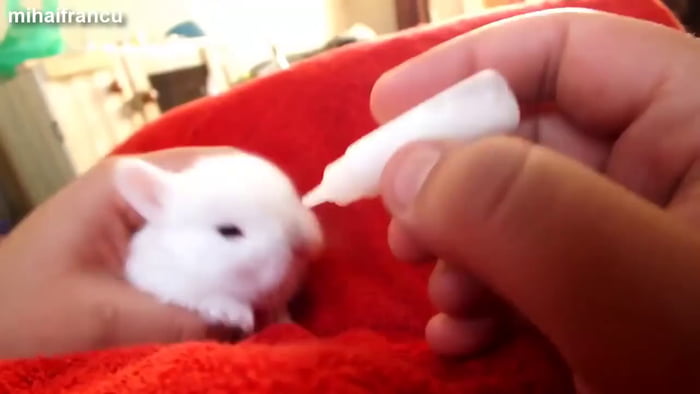 A rabbit needs to gnaw constantly to prevent diseases of the oral cavity, since their teeth grow throughout their lives, lengthening by about 3 mm every week.
A rabbit needs to gnaw constantly to prevent diseases of the oral cavity, since their teeth grow throughout their lives, lengthening by about 3 mm every week.
The rest of the food is replenished twice a day. It may seem that the pet is constantly hungry and chews something all the time. This is due to the fact that plant food is quickly digested and the animal again needs to replenish its energy reserves.
Every day, the diet should include:
- Branches of trees and bushes or bark
- Fresh or dried herb
- Vegetables and herbs
- Ready mixed feed
Do not forget that your eared pet should always have clean drinking water. So that it does not become contaminated with hay, food and feces, use special drip drinkers for rodents with a ball.
Now more about each component of the diet.
Prepared feed
Ready-made feeds for decorative rabbits, which are available in pet stores, simplify the composition of the diet. But before buying, you should familiarize yourself with the composition. Economy pet food is like fast food for humans. They cause problems with the internal organs, lead to overweight and significantly shorten the life of the pet. Therefore, it is recommended to buy a more expensive but quality product that will benefit your rabbit. For example, blends from Versele-Laga are considered good.
But before buying, you should familiarize yourself with the composition. Economy pet food is like fast food for humans. They cause problems with the internal organs, lead to overweight and significantly shorten the life of the pet. Therefore, it is recommended to buy a more expensive but quality product that will benefit your rabbit. For example, blends from Versele-Laga are considered good.
When buying expensive feeds, you should carefully study the composition and decide whether it is suitable. It is necessary that the mixture consists of at least a fifth of the crude fiber. This is the fiber that herbivores so desperately need. But proteins and fats should not be too much, as their excess harms the rabbit. Various vitamins and minerals will help.
The diet of a rabbit cannot consist only of ready-made feed mixtures. Your pet should definitely get more branches, hay and vegetables.
Rabbit roughage
Roughage is the basis of the rabbit's diet throughout the year.
Hay
Good quality fresh hay should always be available.
Hay with mold, wet, with an unpleasant odor is not suitable. Also, do not use for drying grass cut by a lawn mower and collected near highways.
The following types of hay may be included in the rabbit's diet:
- Meadow grass
- Legumes
- From cereals
- Forbs
Branches and bark
Rabbits love to gnaw on twigs and bark and willingly eat:
- Apple tree
- Aspen
- Cherry
- Lipu
- Poplar
- Raspberry
- Willow
- Rowan
- Acacia
- Oak
- Ivu
- Ash
- Maple
- Pine
- Christmas tree
- Juniper
It is better to dry the branches beforehand, they can also be prepared for the winter.
Succulents
Rabbits are not picky eaters, but you can change the ingredients on the menu about once a week.
Greenery
In the warm season, in order to provide your little eared pet with fiber and vitamins, it is worth including greens in the diet. Here is a list of herbs that will suit a decorative rabbit:
- Plantain. This herb is rich in nutrients, so its excess will lead to obesity. On the other hand, it saturates animals well and is rich in vitamins.
- Nettle. This herb is given after getting rid of the flowers. Useful both fresh and in the form of hay. Fresh nettles are best treated with hot water, then finely chopped and mixed with ready-made mixtures. One of the best herbs for rabbits.
- Dandelions are also good to add to food, the only question is how much to give the animal. Per day, they can account for no more than one third of the total green mass.
- Clover and other similar meadow grasses. It is better to dry them a little if self-preparation is carried out. An excess of such food leads to the fact that the pet's stomach swells.
 Therefore, the amount of clover should be limited.
Therefore, the amount of clover should be limited. - Lucerne deserves a special mention. A very nutritious herb.
You can also treat your rabbit to herbs such as basil, cilantro, dill, mint, oregano, parsley, rosemary, sage, thyme, and lettuce leaves such as arugula and watercress.
If you are harvesting grass and hay for your pet on your own, then try to pluck the grass away from the roads, and even better outside the city.
Vegetables and fruits
Vegetables and fruits for rabbits are a pleasant addition to the diet, although they cannot serve as its basis. Animals kept at home will benefit from the tops of garden plants. For example, the green parts of peas, beans, beet tops or carrots can be a pleasant addition to the diet. But, if we talk about vegetables and fruits, then only one thing can be said here - everything is good in moderation.
Fruits are usually given 2-4 times a week, as an excess of such high-carb foods leads to bloating. And you should not give the rabbit something very tasty too often, otherwise he gets used to such food and refuses the simpler one.
And you should not give the rabbit something very tasty too often, otherwise he gets used to such food and refuses the simpler one.
The diet of your eared pet may include the fruits of our middle band.
Vegetables in moderation can be given daily.
Foods suitable for feeding rabbits include:
Decorative rabbits are not the most picky animals. But their diet must be composed wisely and with care. Only then will he help the eared baby live a long and healthy life. If you are having difficulty formulating a diet for your rabbit, or if he has any diseases, then you can get advice on feeding from our rodent veterinarians.
- Carrot
- Brussels sprouts
- Bell pepper
- Zucchini
- Pumpkin
- Turnips
- Beetroot
- Broccoli
- Asparagus
- Cucumber
All fruits and vegetables must be given fresh and not cooked.
Do's and Don'ts for Ornamental Rabbits
Rabbits are herbivores.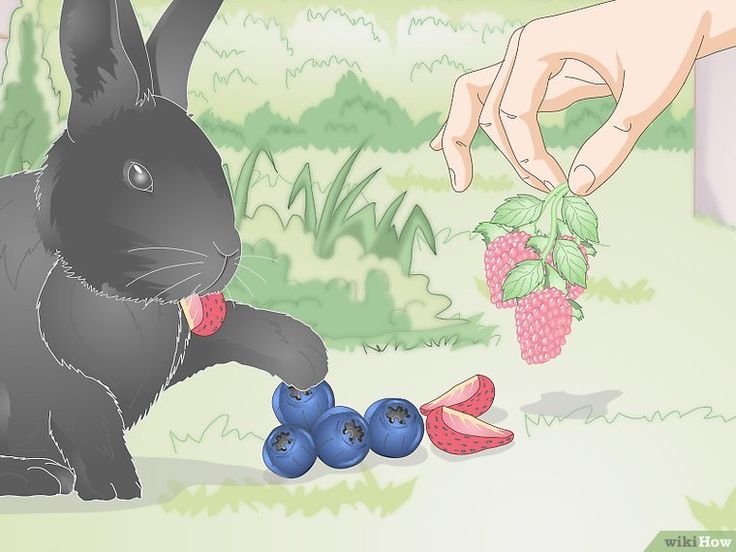 Their diet should be taken very seriously. Do not include harmful and dangerous foods in your pet's menu:
Their diet should be taken very seriously. Do not include harmful and dangerous foods in your pet's menu:
- Dairy and fermented milk products
- Meat, poultry and seafood
- Nightshade
- Bow
- Avocado
- Exotic fruits and vegetables
- Rhubarb
- Cereals: rice, millet, corn, rye, wheat
- Peas
- Seeds of apples and other fruits and berries
- Nuts
- Sweets: honey, sugar, chocolate, sweets
- Bakery and fast food
- Canned and cooked vegetables can cause serious indigestion
- Fatty foods
- Spices
- Muesli and sweet honey sticks and other treats
- Cheap feed mixes high in sugar and fat
How to tame a rabbit, process details
- Are you here:
- Own farm
- Farmer questions
- rabbits
We have recently acquired a decorative rabbit, we have long wanted such a pet to live with us. But we ran into a problem - he does not want to sit on his hands, breaks out, even sometimes tries to bite. We are afraid that we will not cope with it and do not even know what to do now. I would like to find a common language with him, tell me how to tame a rabbit?
Buying a baby rabbit, many new owners are disappointed. They think that rabbits are naturally affectionate and sweet animals, but they face such an unpleasant surprise as the animal tries to run away and hide. The pet begins to break out of the hands, and sometimes even shows aggression. What to do in this situation?
Why tame a rabbit?
Aggression in a rabbit is manifested not at all because the pet is inadequate or angry. It is important to remember that he is a shy animal and even after living for some time in human society, he still needs to be tamed.
It is important to tame a rabbit even because you still have to clean the cages, feed the animal, water it. And if the eared one is afraid of a person, then every time he will be very nervous. An animal that does not know human hands is very difficult to care for, and it will get sick from often endured stress.
You can tame both adults and small pets, of any breed and with any character. And the process of getting used to a person happens quite quickly. The exception is wild eared ones, it will take a lot of patience.
Hand training process
Hand training a rabbit is not as difficult as it seems at first glance. The most important thing is to be patient and aim for a positive result. This animal is cautious and shy, and it can take quite some time to get used to the fact that human hands do not pose a danger to it. Although much here depends on the nature and behavioral characteristics of the pet - some animals make contact quickly, while others need more time to get comfortable and stop being afraid.
To tame a decorative rabbit, it is important to handle it very carefully - do not pull it roughly out of the cage, do not pull by the ears and paws, do not force it in your hands. This can frighten the animal even more, and the process of finding a common language will drag on for a long time.
The process of taming is as follows: first you need to get to know the pet. At the same time, it is important to approach the cage slowly, carefully, talking calmly with your pet. You can call him by name, the main thing is to do it in a quiet voice.
Next, the pet must get used to the smell of the owner. A hand is carefully extended to the animal, it is given the opportunity to smell it calmly (hands should not smell like perfume). You can not make sudden and frightening movements at this moment! Only after this stage, you can try to feed the rabbit with some kind of treat (carrot, dandelion, some dry grass), giving it through the bars of the cage. The rabbit must take the treat himself.
The next step is to offer food through the open door of the cage. Rather, it will be an attempt to lure the pet out of its shelter. Only when the animal begins to calmly leave the cage on its own, you can try to scratch it, stroke it and pick it up. And for the first time, it is better to lure him into your arms with something tasty.
Rules for communicating with a rabbit
A few rules will help you quickly find a common language with your pet:
- do not abruptly and unexpectedly grab the animal;
- Do not shout loudly in the presence of an animal;
- during petting, the hands are held not in front of the animal's nose, but above the head;
- do not stand over a cage with a pet. The rabbit perceives large objects as threatening and may die from a heart attack.
If the rabbit scratches and bites, then it can be weaned from such behavior. But first, it is recommended to find out the reasons for this behavior.

